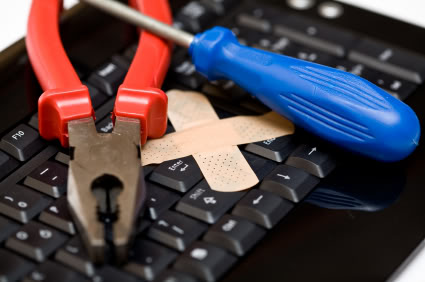If you’re a conscientious PC user, you certainly want to keep your unit in the best working condition you can have it. Although this requires periodic maintenance and monitoring as well as safe and secure usage practices, you can be sure that even if your device becomes obsolete, it can still perform well and get the job done; if a bit slow.

Periodic Maintenance
Some processes have to be done periodically and at equal intervals (or at least often enough) so that you have an idea if your computer is still actually working right. Make sure you do the following:
1. Update your Virus Definitions.
This may be tiresome and consumes quite a lot of bandwidth and resources but it’s an important process. It keeps your computer protected from new kinds of attacks and also updates the current threat definitions to make way for new instances. Consider it preventive measures that can save you files and systems in the future.
2. Run your Scans.
If you have good antivirus and anti-spyware and malware services, these apps initiate scans that search your recent files, downloads and critical folders for any threats. You can pause the scans when they happen or stop them, but it’s better to finish them. They take up a lot of resources as well and you may notice that your system slows down while these scans happen.
3. Defrag your Files.
Defragging is the same as arranging books by alphabetical order just so it’s easier to find them. Whenever you access or create a file, the computer just saves the data into several clusters around the hard drive. When you search for or open the file,the computer has to assemble these clusters to bring up the file. When you defrag, your computer puts the clusters that belong together next to each other so opening, searching and loading files and processes happens much faster.
Safe and secure browsing
You may not realize it, but the internet is the number one source for all possible ways your PC can malfunction. When you browse and surf, you’re essentially exposing your system to other people’s data, files and processes. Anyone with a mind to can infiltrate your system, steal or even tamper with your files.
With those threats to your PC in mind, make sure you follow these rules for safe and secure browsing:
1. Protect your Passwords.
You may have quite a few accounts to your name, which could include social media sites, banking sites, business phone services and the like. Although it’s easy and tempting to use just one password and login name for all your accounts, refrain from doing so. If just one of these accounts is compromised then all your other accounts can be used by someone else as well.
2. Don’t give out any Personal Information on the Web.
Unless it’s a site you trust, don’t input your real name, address and especially if you ask information anywhere. If you want to do some online shopping, restrict it to places that accept Paypal.
3. Beware of Phishing Sites.
Phishing is a way that most fraudulent sites manage to wrangle personal information out of you. They disguise sign-up forms and registration pages so it looks like you’re getting something when they just want your name and address. You have no idea what people on the internet can do with your name and address, so you should do well to keep that information as secret as possible.


